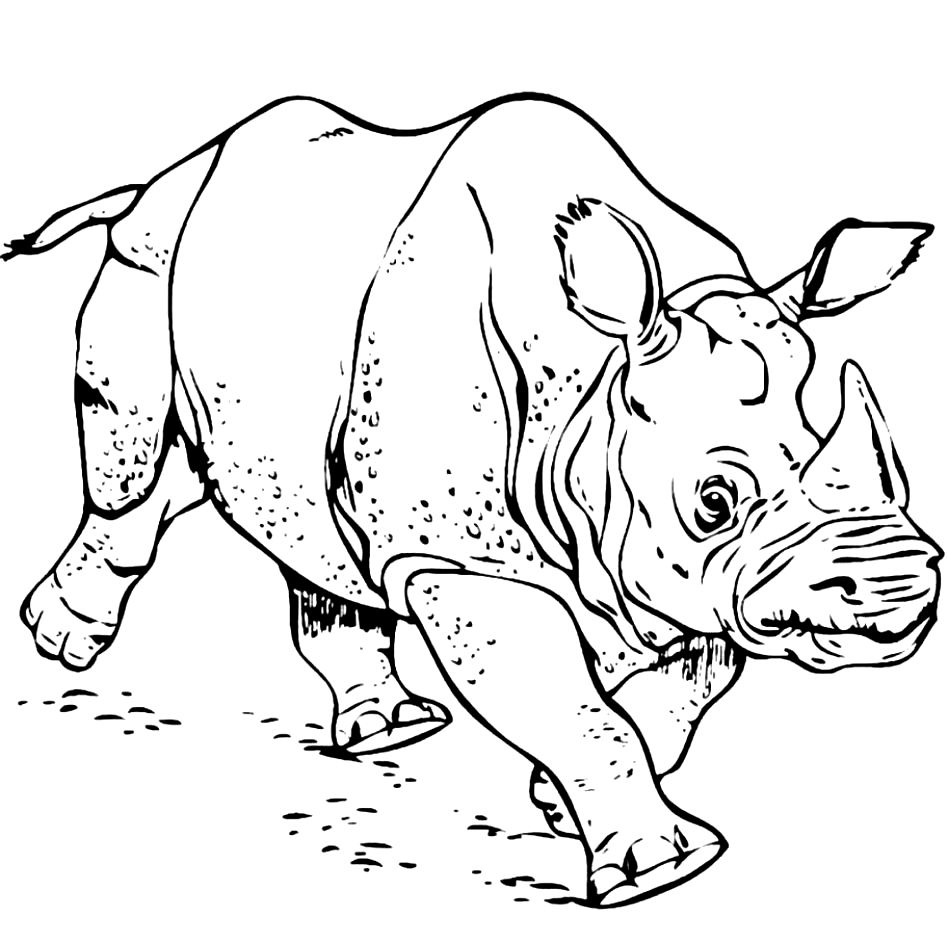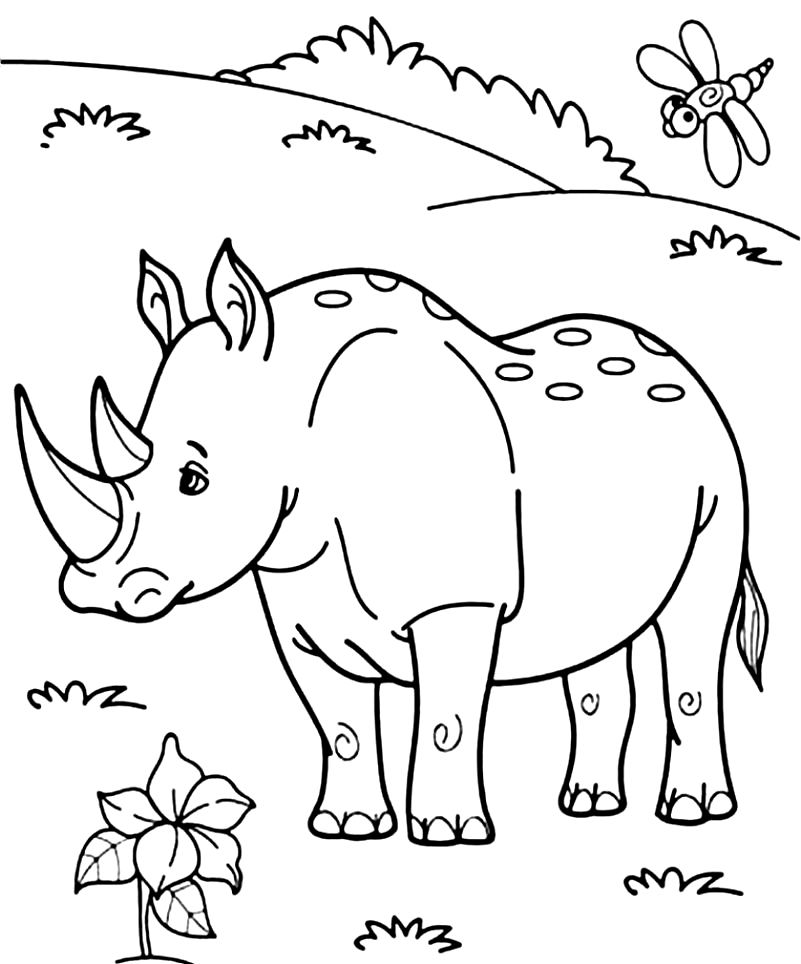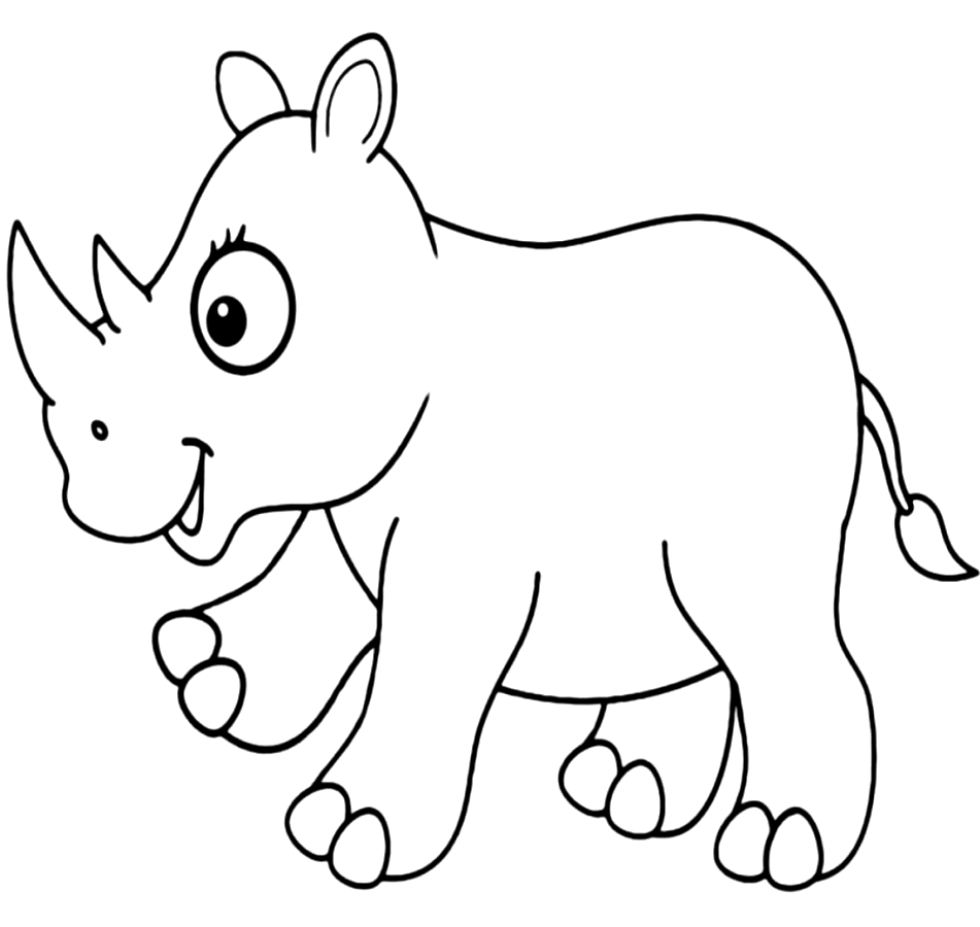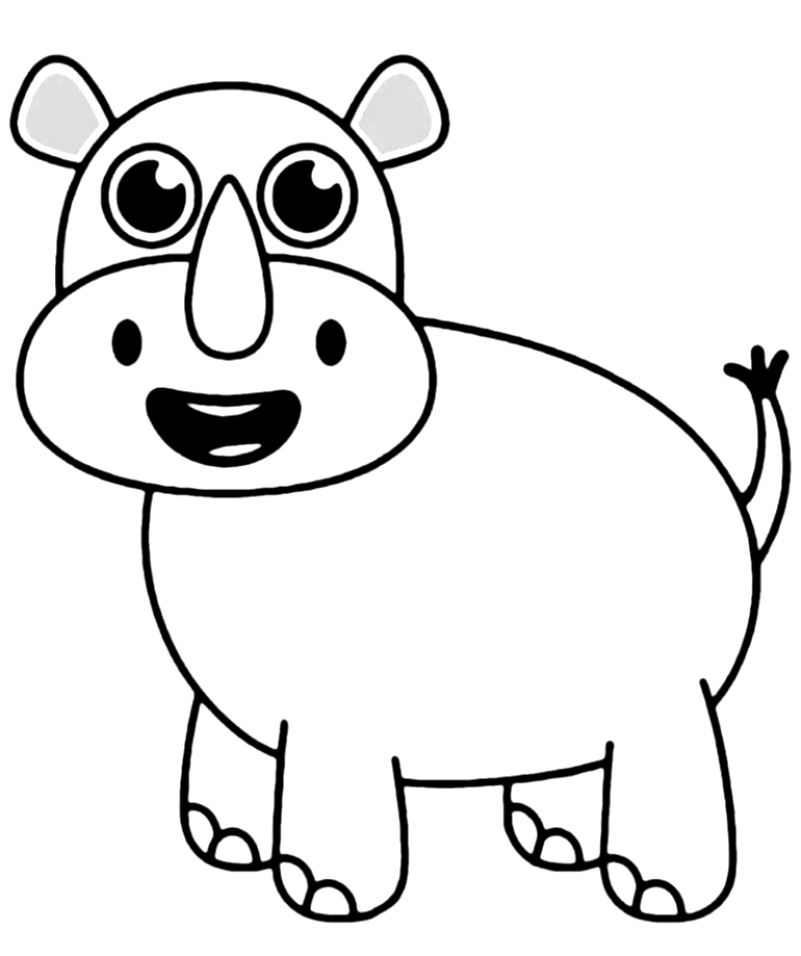Rhinoceros
Rhino coloring pages reflect the wild nature beautifully. You can reach the rhinos coloring page we have prepared for children and teenagers right away. Completely free printable. Rhinoceros are large, herbivorous mammals defined by their characteristic horned snout. Rhinos are herbivorous animals. They don't ruminate. Rhinos sometimes live alone and sometimes in groups. Now we will give you interesting information along with the rhino coloring pages.
Rhinoceros coloring pages (free printable)
Rhinos are amazing animals. We got to know better with these coloring pages. The rhino is a very large and grass-fed animal. This animal, which is in the rhinoceros family, is known as the largest animal living on land after elephants. Rhinos generally live in Africa and India. The climatic conditions in other regions are not suitable for their life. It has very thick skin and a pointed horn. The production of tanks today is inspired by the rhinoceros. The Latin name of the rhino is Rhinocerotidae. It is a very durable animal with its long life and strong structure. Even herds of lions act cautiously before attacking. He can stand up to a whole pack of lions and kill a lion with a single horn blow. Their length varies between 2 meters and their weight varies between 1.5 tons. Weight and height characteristics are quite distinctive among the species.
Rhinoceros and Its Characteristics
Rhinos are a species of ungulates that can live comfortably even in the barren places of Africa. Its mass provides protection from other predators. It has a very thick skin and the color of its skin allows it to be protected from sunlight. Thus, it is protected from the sweltering heat of Africa. It usually feeds on grasses. It lives in herds and is equipped with very protective instincts. He may even risk his life to protect his cubs. It has a very temperate nature towards humans, but when threatened in its habitat, it can launch attacks that can result in death. Generally calm and docile.
Rhino Species
Rhino species include White Rhino, Indian Rhino, and Black Rhino. Each species has different length and mass ratios.
Rhino Life
Rhinoceros have a very long lifespan. Being a strong competitor to both living conditions and predators, it is very rare for them to be attacked. The average lifespan of a rhino is 35 years. The last of its kind, the White Rhino "Sudan", died in recent weeks at the age of 45.
Interesting Facts About Rhinos
Among the interesting facts about rhinos are their strength. Despite their heavy size, they can run very fast short distances. Rhinos have a bony horn on the front of their head, and the horn continues to grow as they get older. The weight of the horn is about 80 kilograms. Rhinos often attack to protect themselves. These attacks are called “slamming”. The consequences of an adult male rhino's butt bring certain death for humans. The damage to this animal, which has an average weight of 1400 kilograms, causes all bones to break in the human body, paralysis and death. With a single blow of the horn, he can break the skull of an adult lion. When rhinos attack, they can sometimes bite their opponents. Although the jaw pressure of rhinos is not very high, the person or animal caught between the teeth is breathless. The weight of the teeth and jaw is quite large. The jaw pressure of rhinos ranges from 80 to 120 kilograms. He deals the biggest blow to his opponents with his horns. In addition, rhino horns are very valuable. There are countries that trade rhino horns for large fees.
Great-horned rhinos are "vulnerable", meaning they could be endangered unless conditions improve. Their population is increasing day by day. There are 3,333 more unicorn rhinos in the world. According to the IUCN, the total population estimate in 2007 is 2,575.
White rhinos are "threatened", which means they could face extinction in the near future. Southern white rhinos have a growing population and there are 20,405 southern white rhinos. However, the northern white rhino is considered "extinct" in the wild.
In 2009, four northern white rhinos from a zoo in the Czech Republic were moved to a special preserve in Kenya in hopes that they would breed, according to the IUCN. On October 18, 2014, the Ol Pejeta Conservancy announced that one of the last two born males had died. Yet he was not a victim of poaching, and investigators were investigating the cause of death. On March 20, 2018, Sudan's last male northern white rhino was declared dead.
According to the World Wildlife Fund, there are only two northern white rhinos living in captivity in the world. The northern white rhinos are two women, Najin, daughter of Sudan, and Fatin, daughter of Najin, who lives in the Ol Pejeta Conservancy in Kenya. The two women lack a successful pregnancy: Najin is too old and problems with her legs make it impossible for a man to support his weight. According to experts, Fatin has a uterine condition that would keep her reproduction likely.
With natural breeding attempts for northern white rhinos, conservationists have turned to in vitro fertilization. However, IVF in these rhinos comes with its own challenges, including figuring out how to obtain immature eggs that develop outside of the female's body, as well as how to inject these eggs with sperm.
As for the Sumatran rhinos, they are also hung by a thread. Along with the Javan rhino, Sumatran rhinos hardly ever hang out in the wild. It became extinct in Vietnam in 2010 and Malaysia in 2015, according to the International Rhino Foundation. Small populations of the subspecies persist in three national parks in Sumatra.
Rhino Horns
Rhino horns are composed of keratin, which is also the main component of human hair and nails. But horns aren't just dense clumps of hair. CT scans showed dense deposition of the mineral calcium and melanin in the core of the horn. Calcium makes the horn stronger, and melanin protects it from the sun's UV rays, according to scientists at Ohio University. OU doctoral student Tobin Hieronymus said the horns resemble horse hooves, turtle beaks and cockatoo bono. Rhino horns are curved backwards towards the head because the keratin in the front grows faster than the keratin in the back.
Black rhinos, white rhinos, and Sumatran rhinos have two horns. It is known that there is only one species in Javan rhinos and one-horned rhinos. In the black rhino, the front horn can grow from 53 to 134 cm, while the hind horn can grow to about 20 inches, according to the International Rhino Foundation. A white rhino horns are slightly smaller and a Sumatran rhino horn is about 25 to 80 cm for the front and less than 8 cm for the hindquarters. The larger one-horned rhino has a horn between 20 and 60 cm, and Javan rhinos have a horn about 25 cm long.
Sizes of Rhinos
The largest rhino species is the white rhino, according to the San Diego Zoo. It grows 3.7 to 4 meters long and 1.8 m from hoof to shoulder. It weighs about 2300 kg.
The smallest rhino species is the Sumatran rhino. It grows 2.5 to 3 m long and up to 1.5 m from spine to shoulder. The Sumatran rhino weighs about 800 kg.
Habitat
White rhinos and black rhinos live in the grasslands and floodplains of eastern and southern Africa. Great one-horned rhinos can be found in the swamps and rainforests of northern India and southern Nepal. Sumatran and Javan rhinos are only found in small areas of swamps and rainforests in Malaysia and Indonesia. Rhinos spend their days and nights grazing and only sleep during the hottest parts of the day. On the rare occasions when they are not eating, they can be found enjoying a cooling mud. These help protect animals from insects, and mud is a natural sunscreen, according to National Geographic. Although rhinos are usually solitary, they sometimes form groups. These groups, called swarms, consist of a female and her offspring. Male rules dominate a land.
Rhino Cubs
A female rhino reproduces every two and a half to five years. Female rhinos carry their young for a gestation period of 15 to 16 months. They usually have a single baby, sometimes they have twins. At birth, baby rhinos, called calves, are still quite large, weighing between 40 and 64 kg.
At about 3 years old, the calf is able to set out on its own. A rhino can live up to 45 years. Although rhinos don't often hang out with each other, they do hang out with birds. The oxpecker will sit on rhinos' backs and eat insects that rubbed into the rhino's skin. That's not the only thing this bird is good at. When danger approaches, the bird warns the rhino. When rhinos are happy, they make a loud "mmwonk" sound with their mouths. According to the International Rhino Foundation, black rhinos are not actually black. Presumably, they got these names from the dark, muddy soil they wanted to distinguish from stews or white rhinos. Poachers also value rhino horns for making ornamental dagger handles called jambias, preserving the Rhino.











